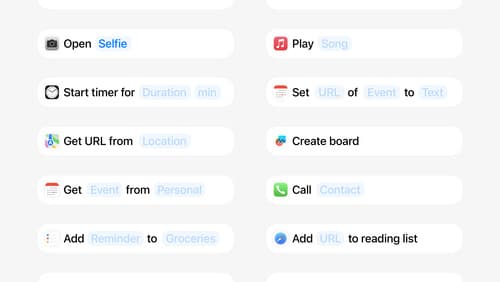How can you use app intents?
Asked on 2024-07-30
1 search
To use app intents effectively, you can follow the guidance provided in the WWDC sessions:
-
Understand What App Intents Are:
- App intents are a way to expose your app's core features to the system, allowing them to be used in various system experiences like Siri, Spotlight, Shortcuts, widgets, and more. They consist of a summary of what the intent does, starting with the app followed by a verb, and include the necessary parameters (Design App Intents for system experiences).
-
Designing App Intents:
- Surface Key Functionality: Initially, app intents were meant for the most habitual tasks in your app. However, the guidance has evolved to include any functionality your app offers (Design App Intents for system experiences).
- Avoid Redundancy: Do not create multiple intents for the same task. Instead, structure your app's functionality into flexible intents where parameters can be adjusted (Design App Intents for system experiences).
- Parameter Summaries: Ensure that parameter summaries are readable and make sense as a sentence, regardless of the selected parameters (Design App Intents for system experiences).
-
Implementing App Intents:
- Open When Necessary: In iOS 18, opening your app as part of an intent is now common to show changes made by the intent. This can be toggled off if the intent is part of a larger shortcut flow (Design App Intents for system experiences).
- Background Capabilities: If your app supports live activities, audio playback, or recording, create app intents that allow these actions to be performed from the background (Design App Intents for system experiences).
-
Adopting App Intents:
- App intents serve as a foundation for various features like Siri, Spotlight, and Shortcuts. By defining your app's core actions and content through app intents, you can make these features accessible outside your app (Bring your app’s core features to users with App Intents).
For a deeper dive into designing and implementing app intents, you can refer to the sessions:

Bring your app’s core features to users with App Intents
Learn the principles of the App Intents framework, like intents, entities, and queries, and how you can harness them to expose your app’s most important functionality right where people need it most. Find out how to build deep integration between your app and the many system features built on top of App Intents, including Siri, controls and widgets, Apple Pencil, Shortcuts, the Action button, and more. Get tips on how to build your App Intents integrations efficiently to create the best experiences in every surface while still sharing code and core functionality.

Design App Intents for system experiences
App Intents power system experiences in controls, Spotlight, Siri, and more. Find out how to identify the functionality that’s best for App Intents, and how to use parameters to make these intents flexible. Learn how to use App Intents to allow people to take action outside your app, and see examples of when to navigate into your app to show contextual information.
